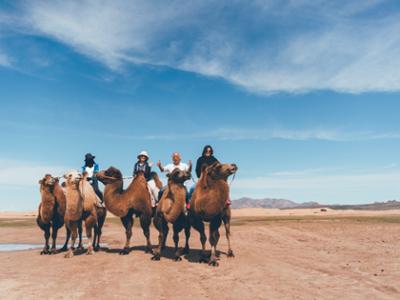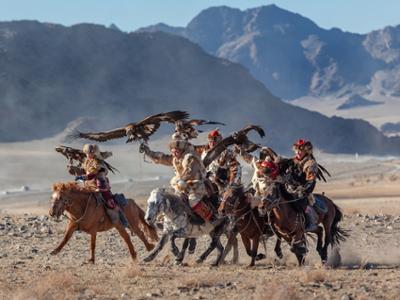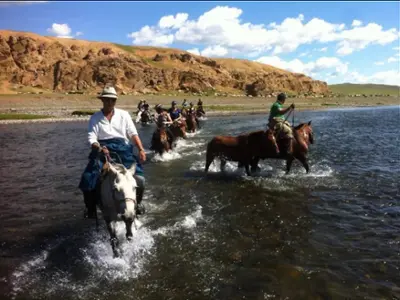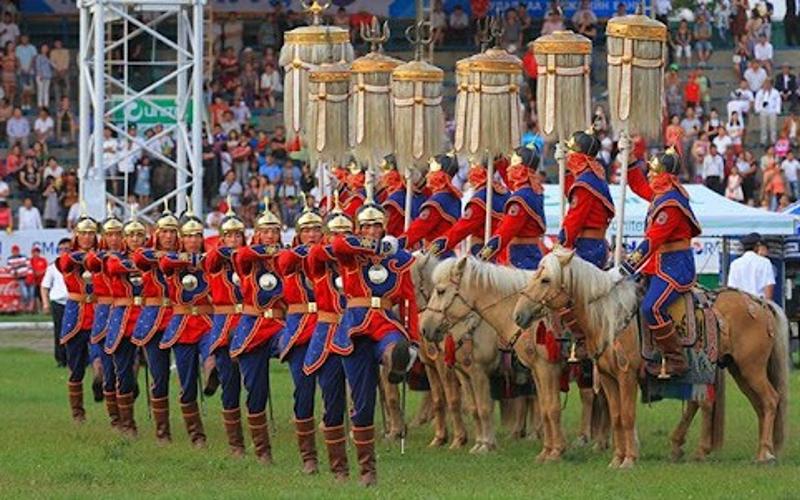
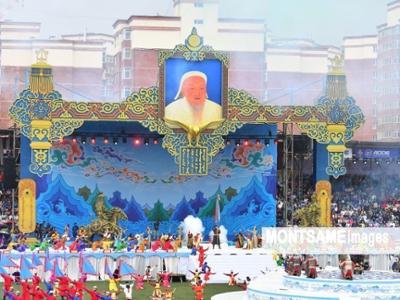
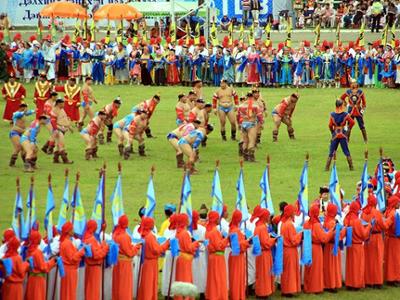

The Naadam is a festival and a national holiday that celebrates Mongolia's independence from China. It takes place every year on July 11 and 12 in Ulaanbaatar and consists of three traditional Mongolian sports: archery, horse racing, and Mongolian wrestling. Since 1998, a fourth game has been added: the throwing of ankle bones (shagai). After the capital's celebration, Naadam is held in each province and town across Mongolia.
The Naadam is said to have originated in 1207 under Genghis Khan and continued throughout the Mongol Empire. The modern version was revived in 1921, marking Mongolia's declaration of independence.
🐎 The Horse Race
Horses are categorized by age with special Mongolian names:
- Унага (Unaga): Foal
- Даага (Daaga): 2-year-old colt
- Шүдлэн (Shüdlen): 3-year-old
- Хязаалан (Khyazaalan): 4-year-old
- Соёолон (Soyolon): 5-year-old
- Их нас (Ikh nas): 6 years and older
The race typically spans 25 km. The first five finishers are honored as “airgiin tav” (the five of the airag), and even the last foal is ceremoniously called “rich stomach” and celebrated. Horses are sprinkled with airag, and shamanic rites accompany the event. The focus is on the horse’s ability and the trainer’s skills rather than the young jockeys (ages 6–12).
🤼 Mongolian Wrestling
Mongolian wrestling, or bökh, is one of the core sports of Naadam. Unlike other wrestling forms, there are no weight divisions. The goal is to make the opponent touch the ground with any body part other than the feet using traditional moves (mekh). Bouts can last for hours. Today, champion wrestlers are national celebrities.
🏹 The Archery
Archery was the national sport during Genghis Khan’s time. Once reserved for nobility, it is now open to all, with many female participants. Archers aim at targets 75–80 meters away using traditional Mongolian bows.

